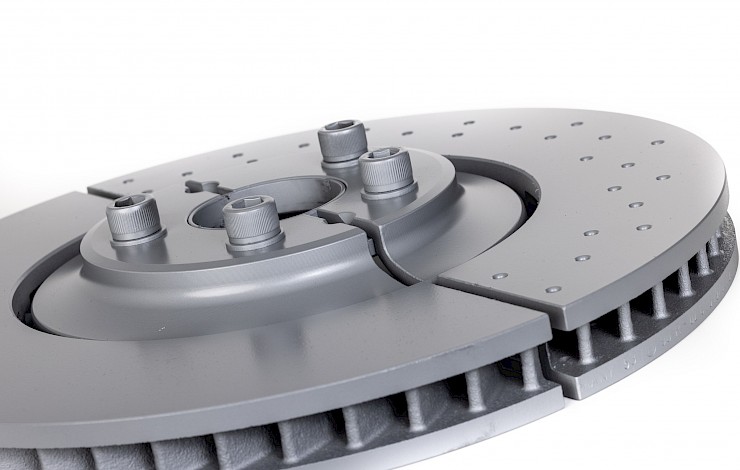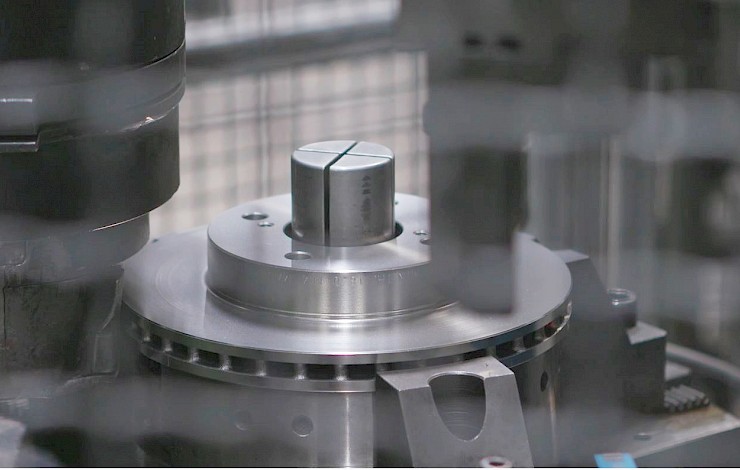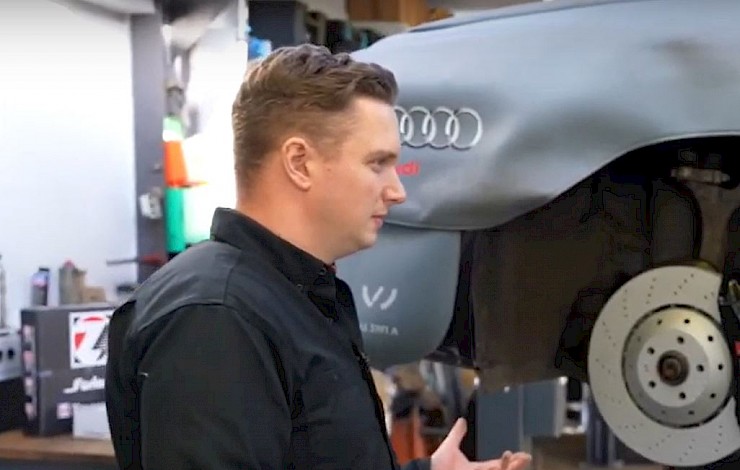The requirements for brake discs have increased constantly over the last 60 years. Precision is and remains a key challenge in producing brake discs. Brake part manufacturer Otto Zimmermann is therefore continuously improving the production in its factory in Sinsheim, Germany.
Over the past decades, brake discs have undergone significant changes: Initially, most brake discs were solid. Today, the majority of brake discs produced are equipped with ventilation channels, primarily for improved cooling.
In addition, the brake discs installed in today's vehicles are becoming larger and larger. Twenty years ago, the average brake disc diameter was approx. 28 cm; today it is over 34 cm. As a result, the manufacturing process per brake disc takes longer: the larger the surfaces to be machined, the more challenging it becomes to maintain the required tolerances – particularly for plane parallelism.
Compound brake discs are playing an increasingly important role, especially in heavy and high-powered vehicles, in order to save weight and offer better driving comfort. However, this type of brake disc requires a significantly more complex manufacturing process.
Optimized manufacturing process
For these reasons, it is necessary to constantly evaluate the processes, tools and machines used for manufacturing and to adapt them to the new requirements.
Zimmermann machines the cast blanks in the central production process by lathing, milling and drilling operations. These operations are subject to very tight tolerance specifications, which are often tighter than those specified by the vehicle manufacturers.
In addition, Otto Zimmermann GmbH checks all ventilated brake discs for imbalances and, if necessary, balances them by means of a precise milling groove. Until recently, all ventilated brake discs had to be transported -by forklifts- to the balancing milling machines in a different part of the factory.
Today, an improved and optimized factory layout, combined with state-of-the-art automated conveying systems, allows fully integrated and automated balancing right after the machining process. This minimizes transport distances, product handling, and speeds up the entire process. Additional efficiency improvements (e.g. increased machining speeds) have been achieved through Zimmermann's continuous investment in the newest, high-precision CNC machines.
Producing brake discs exclusively at their factory in Sinsheim, Germany, is seen as a significant advantage over the competition. Production, warehousing and sales at one location significantly increase identification with the manufactured product. "Every day, we see how our brake discs are manufactured and how the raw materials arrive from foundries in Germany and Europe. This supports our efforts to represent the Zimmermann brand as 'Made in Germany' worldwide," the sales managers agree.
The production in 3-shift operation has an output of around 3.3 million brake discs per year. By optimizing processes, constantly renewing its machinery and using new tools, the company is able to maintain this figure even in the face of increased processing times and product complexity.
Sustainable technology
In addition to optimizing production efficiency, sustainability is one of the key requirements for improvement processes at Zimmermann. As a result, the company was recently awarded the "Energy Certificate" according to DIN ISO 50003 certificate. New acquisitions of production lines, conveying equipment, etc. are selected and purchased with consideration of reducing power consumption.
"Continuous investments and sustainable production through short distances have an extraordinary significance, especially in a family owned company, as we do not only think until the end of the next term, but plan for the long run - for the next generation and the long-term employees," the management of Otto Zimmermann concludes.




